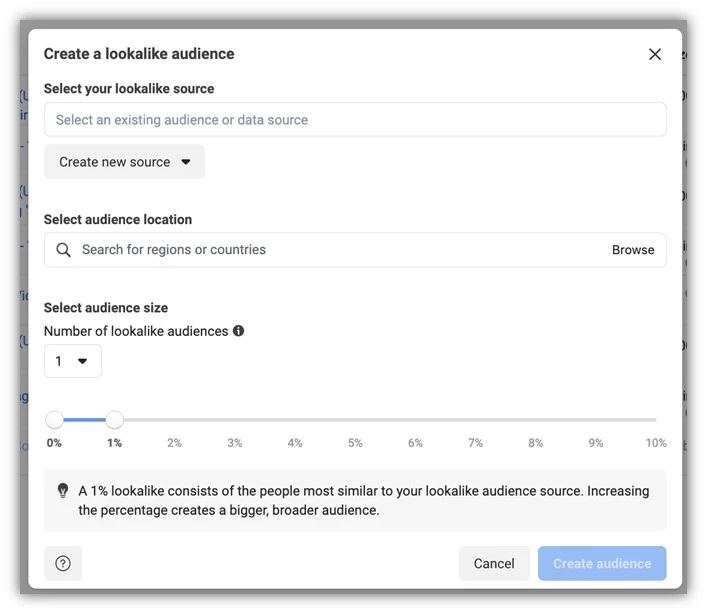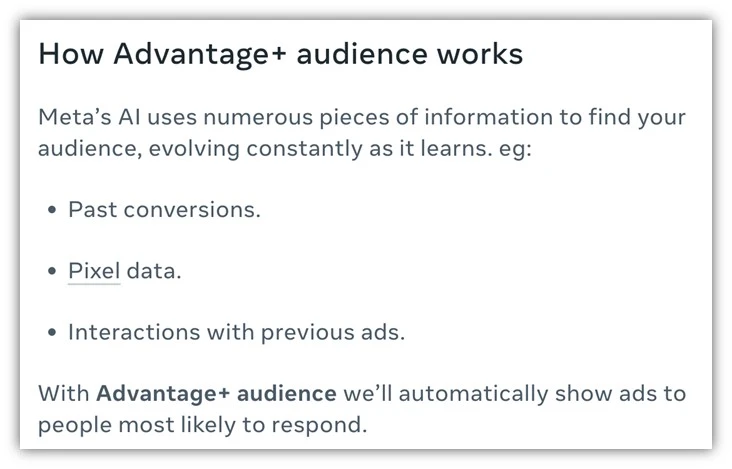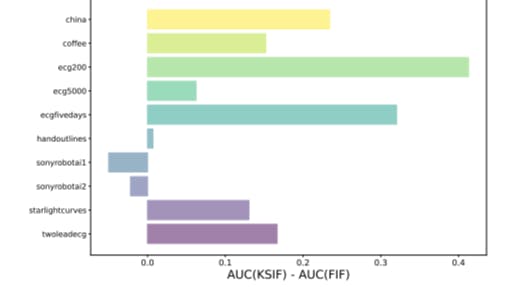Facebook Ads targeting options provide tons of ways for advertisers to reach their potential customers on the platform. For example, you can build audiences based on demographics, interests, behaviors, and engagements. However, it’s not always clear how Meta identifies and defines these traits for each user.
In this article, I want to walk through how Facebook decides who goes in each group and at the same time talk through all the ways you can target your ads on the Meta platform.
Contents
Facebook ad targeting options
Here are the three types of Facebook ad targeting options, how they’re sourced, and how you can make them work for your business.
💸 Wondering how much it might cost you to advertise to your target audience on Facebook? Download our free Facebook Ads benchmark report to find out your industry’s averages for key metrics like CPC, CPL, and more!
1. Detailed targeting audience options
The most specific targeting options available to advertisers on the Facebook platform are in the detailed targeting section. Here, we have four different types of targeting we can use along with a few caveats that I’ll talk about throughout.
Age and gender Facebook ad targeting
These are the most foundational demographic targets on Facebook and are pretty straightforward. You’re able to target users down to the single year digit of their age as well as whether they’re male, female, or all genders.

This information is provided by the users themselves when they sign up for Facebook, so nothing too mystical going on here, but it’s not really fact-checked either. So, there may be some harmless fudging of ages here and there, but for the most part, this is pretty solid information.
Demographics Facebook ad targeting
While age and gender are technically demographic information, the following demographics Facebook ad targeting section has the option to take things a step further. In that same “Detailed targeting” section, if you click “browse” on the right, you’ll then see a dropdown with the main categories of “Demographics, Interests, and Behaviors”. We’ll get to the other two shortly, but for now, we’re going to focus on the items below “Demographics.”


There are tons of different options for you to narrow your audience based on who they are: education level, parental status, work details, etc.
Some of this data is provided by the users themselves when they update their profiles, which is pretty straightforward. But a good chunk of it is also interpreted by Facebook.
As Facebook says below, detailed targeting options can be based on several factors. It looks at ads users click on, pages they engage with, and other activities across Meta, along with the demographics users themselves provide and the mobile device and connection speed they’re using.


As you dig further into these targeting options, you’ll find that some of these are pretty robust while others are pretty sparse. For example, the image below is the financial section and it’s only based on the average incomes for zip codes in the US. That means it’s averaged data, which by its nature isn’t accurate to a person and is only available for people targeting users in the United States.


Interests
The other two detailed targeting options beyond age, gender, and demographics are interests and behaviors. Interest and behavior Facebook audiences are developed in the same way as the demographics listed above, but their options are quite a bit different.
Interests focus on the topics that users like based on the types of content they’ve engaged with in the past, including events, pages they’ve liked, and more.


If you open the dropdown in the Meta Ads Manager campaign builder, you’ll see there’s a very wide range of interest topics to target and all of these have subcategories as well.


Rather than browsing the dropdowns, you may find it more efficient to simply start typing in things you think your target audience is interested in and see what shows up. For example, if I search for hiking, I can see all the options that come up that match that interest.


Additionally, searching can uncover many topics that don’t live in the dropdowns. For example, if I try to find hiking, it doesn’t show up under the sports and outdoors section, which is where it would likely fit.


Behaviors
Behaviors are the other prong of the detailed targeting section. This Facebook ad targeting option lets advertisers reach potential customers based on past purchasing behaviors, device type, and some intent data signals as well.


If we open up the dropdown, there are a handful of actions to give you some sense of these, but even I’ll admit that this is the most hodgepodge section of targeting on Facebook. There’s everything from “new business users” to “gaming activities” to other traits like preferred Facebook and Instagram shop payment types or travel behaviors. It’s quite a mix, so just like interests, browse through what’s here in case it sparks some ideas, but don’t be afraid to simply search for the behaviors you think are core to your target audience.


2. Facebook ad lookalike audience targeting
Lookalike audiences have been the bread and butter of Facebook ad targeting strategies for quite a long time. I think it’s only in recent years that I’ve heard them waning at all for certain advertisers, some of them preferring the Advantage+ Audience (which we’ll talk about shortly), but that doesn’t mean lookalike audiences don’t still work well in many accounts.
Facebook ads lookalike audiences are pretty straightforward. First, you give Facebook a source audience, and then the platform analyzes that list and creates a persona. After that, Facebook puts together an audience of users whose behaviors and interests “look like,” or in other words, are similar to, that persona for you to target with your campaigns.
The source audience is an integral part of seeing success with lookalike audiences. In the image below, you can see all the types of custom audiences advertisers can create on Facebook. Any of these custom audiences can be used as a source for a lookalike audience.


When you’re ready to create a lookalike audience, you get to choose the source audience, and then identify which country of users you want to target. Lastly, you get to select the percentage match you’d like to use. On the small end, you have a 1% match, meaning you’ll target 1% of the population of the location you selected above that looks the most like your source audience. As you choose higher and higher percentages, the size of your audience increases by a factor of that location’s population.


Your source audience must match at least 100 users in a single country, but they recommend an audience between 1,000 to 5,000 users. Anything smaller and it’s a bit hard to determine a strong, meaningful pattern, but anything larger ends up looking like the entire population on Facebook.
💡 See which targeting strategy is right for your business’s Facebook campaigns with our free guide on how to find your target audience.
3. Meta Advantage+ Facebook ad targeting
Meta Advantage+ audiences are effectively Facebook’s machine learning taking over and doing your targeting for you. As a reference for any veteran Facebook advertisers, this is the new automated version of “broad targeting.”
As you can see in the image below, Facebook’s ad technology will automatically find your audience for you and aim to get you the results you’re looking for in that given ad set.


They do this by using information from past conversion performance, your pixel data, and the interactions those users have had with previous ads. I believe that the last portion is both from your ads as well as other advertiser ads that are on the platform, but don’t quote me on that.


🚨 Could your account benefit from Advantage+ campaign settings, or are you already outpacing the competition? Find out with our free Facebook Ad Grader!
There is a place to add your audience suggestion, but it’s optional. When you click that button, you’re given the same targeting options that we’ve already discussed, but don’t be confused, these are suggestions rather than actual targeting.


That means that Facebook will likely start off targeting your audience suggestions, then branch out as it sees patterns or if it thinks it will improve performance. If you need or want to retain full control over your targeting, Advantage+ Audience might not be right for you. However, don’t opt out of it simply because it’s an “automated” choice with less control. Don’t forget, Facebook is one of the most widely used platforms in the world and their machine learning is honestly pretty good. It might not hurt you to test out some of it if you’ve been avoidant in the past and are seeing declining results.
How to know which Facebook ad targeting option is right for your business
That wraps up our overview of Facebook ad targeting options and how they work. Now the answer of which targeting option will work best…that’s up to you to find out. Every account is different and has different goals. Even different campaigns within an account might see better results from different targeting types.
Don’t be afraid to be as controlling as possible in some ad sets and let the machines fully take over in others. Test, analyze, roll with what works best, and always stay open to new possibilities. Plus, you don’t have to navigate Facebook ad targeting all on your own, see how our solutions can help you maximize your social ad campaigns to meet the right audience at the right time every time.



/cdn.vox-cdn.com/uploads/chorus_asset/file/24007892/acastro_STK112_android_01.jpg)



:max_bytes(150000):strip_icc()/generic-software-164461884-574b37543df78ccee1f209f6.jpg)



